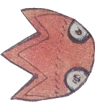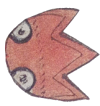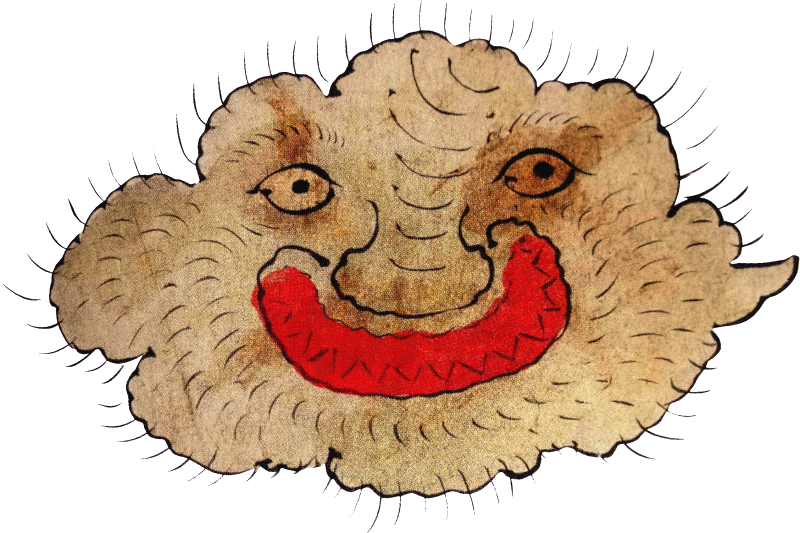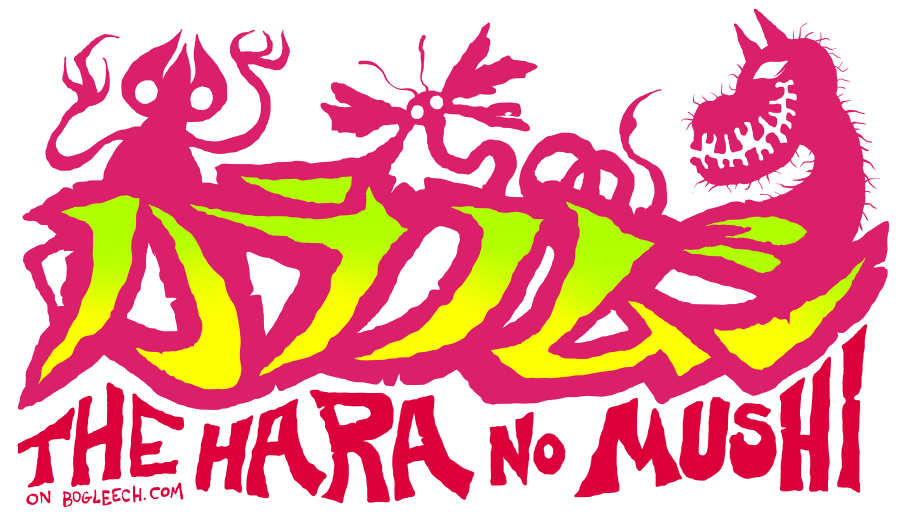
DAY EIGHTEEN: HI NO JU
("Spleen Accumulation")
Written by Jonathan Wojcik, Researched and Translated by Rev Storm
The treatment for this one is pretty special. Following acupuncture, the possessed should be taken to "a rock garden with only the most splendid boulders." Hi no Ju will then become so excited to meet its peers that it will hastily "put the spleen in proper order, leaving it healed," as though tidying up its home to impress all those nicer rocks.
Design Review:
At first glance, I thought this one looked more like a hairy amoeba or gas cloud! It has a lot of personality considering it's nothing but a blob with a face on it; those jagged red teeth are very cool looking, and its human-like eyes and nose fairly eerie in combination with it.TODAY'S REAL WORLD MALADY:
Cholelithiasis
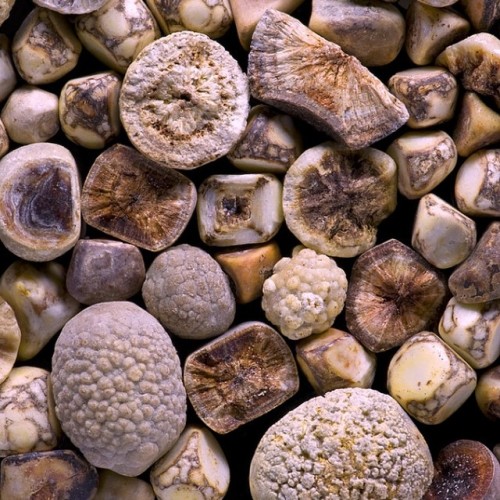
We don't have a parasite this time, because it seems clear what this creature is supposed to represent, and it isn't anything alive at all! Gallstones don't form in the spleen, but they do form in the gallbladder just opposite the spleen at the other end of the pancreas, and they come in several varieties. Some result from high concentrations of crystallized cholesterol, usually because acidic bile salts are too low to break them down before they form and are typically large, white to greenish stones with a dark center. Others are "pigment stones," dark brown to black, formed from a mix of calcium and bilirubin. This is a compound involved in the breakdown of our body's old, retired red blood cells, and its by-products are what dye our feces brown and our urine yellow.
Gallstones typically form because we have too many of any of these components but not enough concentration of the acidic "bile salts" that would normally keep them from congealing, which can be the result of diet, activity level or good old genetics. Fortunately, most gallstones are asymptomatic and just sort of lounge there in the gallbladder doing nothing in particular, but things can become painful - and dangerous - when a gallstone gets accidentally lodged in the bile ducts, and the condition can sometimes become so chronic that the entire gallbladder has to be removed, so it's a good thing we can apparently get by just fine without one.
NAVIGATION:
